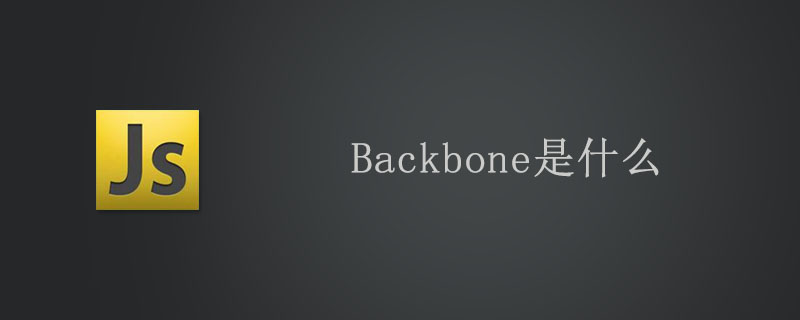

Backboneis a lightweight front-end MVC framework, used to structure a large amount of JS in the management page to build Seamless connections with servers and views provide a basic framework for building complex applications.
Let me briefly explain the main features and characteristics of Backbone:
1. Lightweight
Backbone's source code is only about 1,000 lines (after removing comments and blank lines), the file size is only 16KB, and including the dependent library Underscore, it is only 29KB.
You only need to spend a little time to easily understand the internal implementation of Backbone; or write a small amount of code to override some of Backbone's mechanisms; if you want to do secondary development based on Backbone, it is not A complicated matter.
2. MVC Structure
Backbone can easily decouple the data, logic, and views in the page, and organize the code structure according to Backbone. You can Data interaction, business logic, user interface and other work are assigned to multiple colleagues for simultaneous development and can be organized together in an orderly manner. At the same time, this is very helpful for maintenance and development of large and complex projects.
3. Inheritance mechanism
In Backbone, modules can be inherited. You can use object-oriented methods to integrate data models, collections, and views in the application. Orderly organization makes the entire architecture clearer; custom methods can also be easily overloaded and extended.
4. Establish a seamless connection with the server
Backbone has a built-in set of interaction rules with server data (if you understand the REST architecture, you can easily understand them), and the data synchronization work will be automatically performed in the Model. The front-end developer only needs to operate the client data, and Backbone will automatically synchronize the operated data to the server.
This is a very interesting thing, because the server data interface is transparent to front-end developers, and they no longer need to worry about how to interact with the server.
However, the data interface provided by the server also needs to be compatible with Backbone's rules. For a new project, we can try to use this set of rules to build the interface. But if your project already has a stable set of interfaces, you may be worried about the risks of interface modification.
It doesn’t matter, we can adapt the existing data interface by overloading the Backbone.sync method. We can also implement different data interaction methods for different client environments. For example: when users use services through a PC browser, the data will be synchronized to the server in real time; and when users use services through mobile terminals, considering network environment issues, we can first synchronize the data to the local database, and then synchronize it to the server at the appropriate time. server. And these can be achieved by just overloading a method.
5. Interface event management
In MVC, we hope to completely separate the interface presentation and business logic, but for user-generated interactive events (such as click event), we often obtain and bind it through the bind method in jQuery.
The above is the detailed content of What does backbone mean?. For more information, please follow other related articles on the PHP Chinese website!